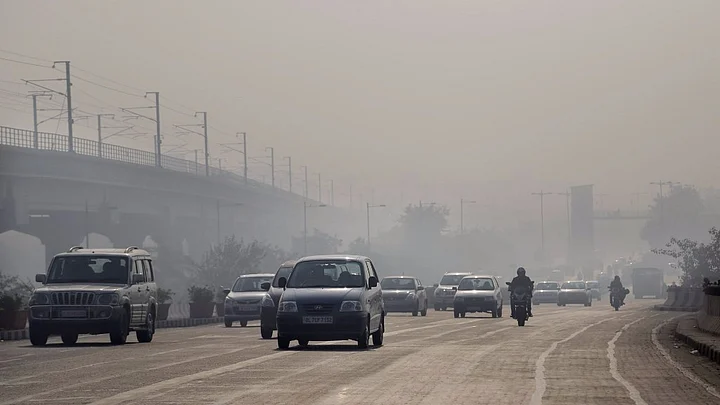India ranks 128th in terms of meeting the UN's health-related Sustainable Development Goals (SDGs) by 2030, with low scores on air pollution, sanitation, hepatitis B and child wasting, according to a global health review published in The Lancet on 13 September.
The Global Burden of Disease study provides new estimates on where the world currently stands in terms of meeting these goals, showing that while some countries have made significant improvements, much progress is needed.
The study is the first comprehensive analysis of trends from 1990-2014 and projections to 2030 for 188 countries.
The analysis also ranks countries on an overall health-related SDG index.
Singapore, Iceland and Sweden were the highest performing countries in terms of the overall health-related SDGs.
Somalia, Central African Republic, and Afghanistan ranked lowest.
The UK was ranked 10th but, in comparison to other countries, performed poorly on indicators of child sexual abuse, alcohol use, smoking prevalence and child overweight.
The US ranked 24th and performed poorly on indicators of suicide mortality, child sexual abuse, alcohol use and homicide.
China ranked 74th with low scores on air pollution, road injury, poisoning and smoking.
India ranked 128th with low scores on air pollution, sanitation, hepatitis B and child wasting.
Wasting, also known as wasting syndrome, refers to the process by which a debilitating disease causes muscle and fat tissue to "waste" away.
On the basis of past trends, more than 60 percent of countries are projected to meet targets on under-5, neonatal and maternal mortality and malaria, and fewer than five percent of countries are projected to meet targets on road injury mortality, childhood overweight and tuberculosis.
Established in 2015, the SDG framework is in its infancy.
The findings should help shape policies and investment in order to address long-standing and emerging health challenges.
The SDGs include 232 individual indicators to monitor 17 goals and 169 targets, ranging from energy, climate change, economic growth, health and education.
The study, part of the Global Burden of Disease enterprise coordinated by the Institute of Health Metrics and Evaluation (IHME) at the University of Washington in the US, estimates progress for 37 out of 50 health-related indicators included in the SDGs, as well as an overall health-related SDG index.
Some indicators saw significant improvements, including in some low and middle income countries.
For instance, Cambodia, Rwanda, Equatorial Guinea, Laos, Turkey and China recorded the greatest improvements on the Universal Health Coverage (UHC) indicator between 2000 and 2016.
The researchers identified policies that may have helped achieve progress, for instance China expanded its health insurance scheme to rural populations and unemployed urban residents in the 2000s and followed with further reforms in 2009-10, and Cambodia's health reforms from 1990 onwards have laid the way towards national health planning.
China, Cambodia, and many other middle and low-income nations deserve recognition for improving their citizens’ lives, as evidenced by impressive improvements in under-5 mortality, neonatal mortality, vaccine coverage, maternal mortality, and malaria. At this juncture, the global health community must be vigilant in accelerating progress toward and donors must remain committed to achieving the SDGs.Christopher Murray, Director of IHME
Only seven percent of countries were projected to meet the target on HIV/AIDS, and no country was projected to reach the SDG target on tuberculosis.
A number of targets remained out of reach for most countries, with a total of 11 targets projected to be met by less than five percent of countries, including on childhood overweight, suicide mortality, and road injury mortality.
(At The Quint, we question everything. Play an active role in shaping our journalism by becoming a member today.)
